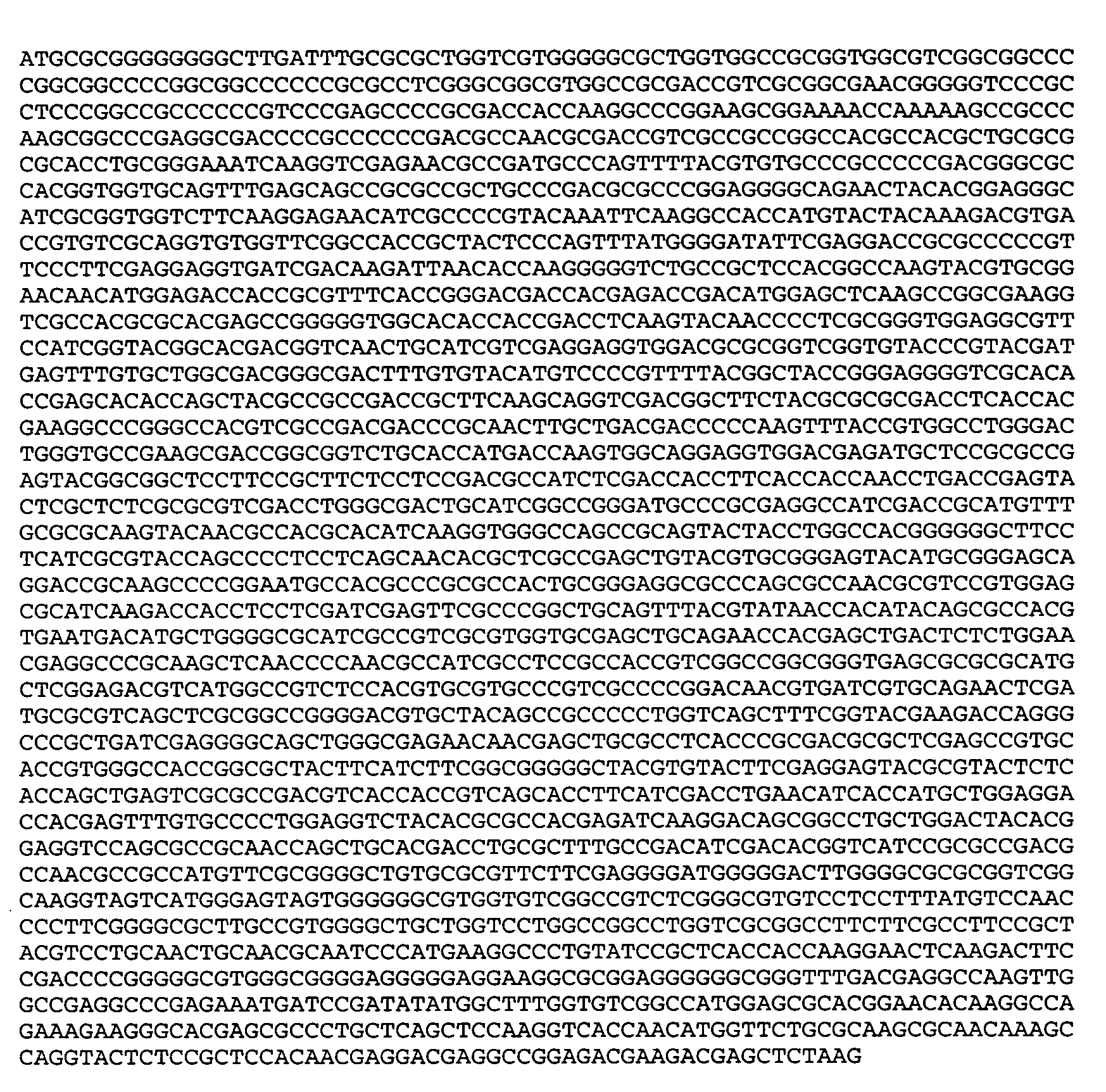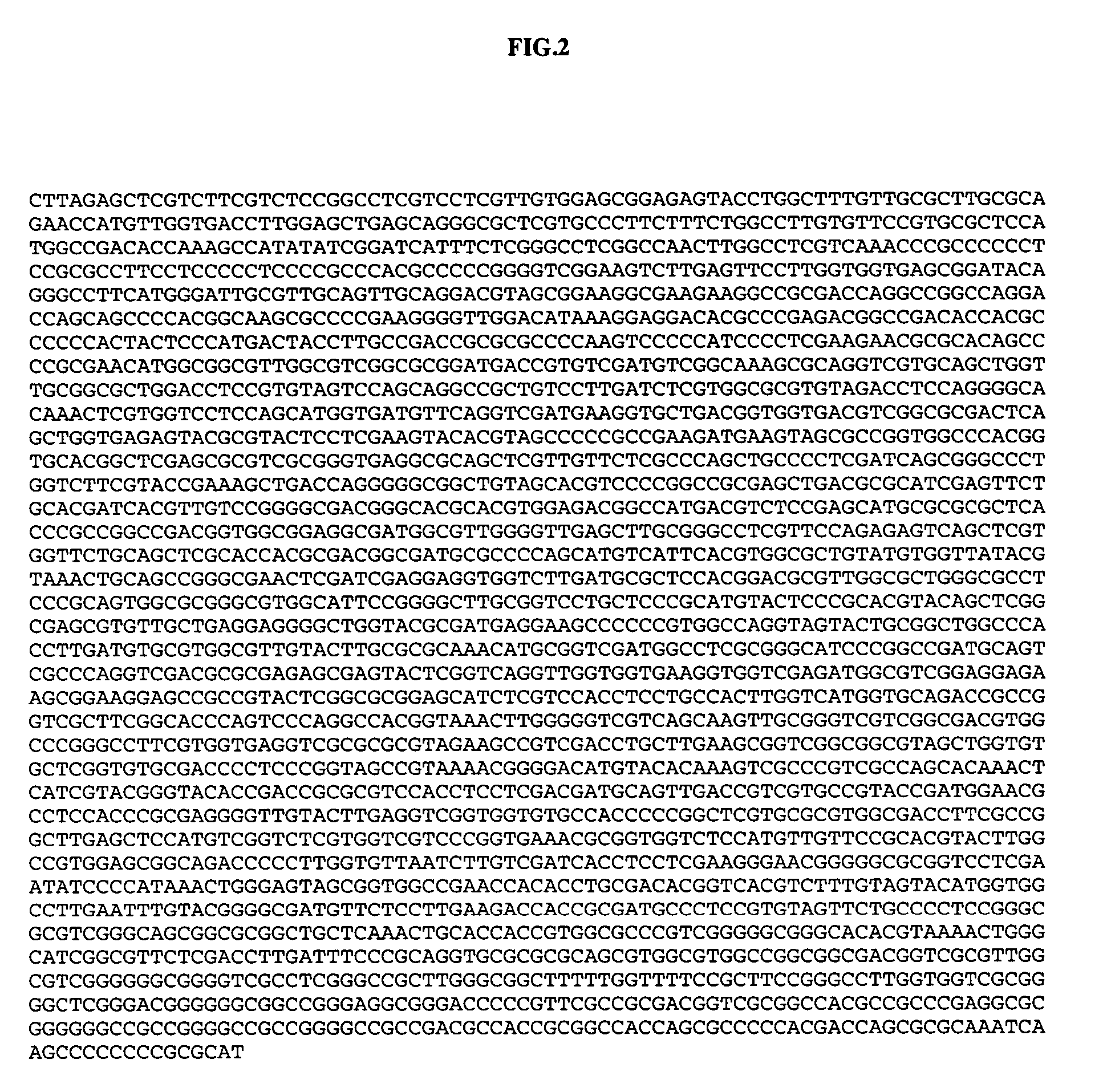Methods and compositions related thereto for detecting and identifying distinct species of nucleic acids from causative agents
a technology of nucleic acids and causative agents, applied in the field of methods and compositions related thereto for detecting and identifying distinct species of nucleic acids from causative agents, can solve the problems of patient non-efficacy treatment, patient's original condition progressing to the further detriment of treatment and patient's well-being, and the method employed cannot discriminate between hsv-1 and hsv-2
- Summary
- Abstract
- Description
- Claims
- Application Information
AI Technical Summary
Problems solved by technology
Method used
Image
Examples
example hsv-1
and HSV-2 Primers and Probes
[0028] The oligonucleotide primers and probes specifically employed in a certain embodiment of the invention presented herein were synthesized by Integrated DNA Technologies (IDT, Coralville, Iowa) and are listed in Table I. The dual-labeled oligonucleotide probes and 5′ biotinylated primers were purified by high performance liquid chromatography (HPLC) by the manufacturer.
TABLE IIExample Primer and probe sequences forreal-time PCR amplification and detectionof HSV-1 and HSV-2PrimerSequence 5′ to 3′HSV1 / 2 FORTTCTGCAGCTCGCACCAC (SEQ ID NO:5)HSV1 / 2 REVGGAGCGCATCAAGACCACC (SEQ ID NO:6)HSV1Pr6-carboxyfluorescein / CGATGGCAACGCGGCCCAACATATCGTTGAC(SEQ ID NO:7) / BHQ-1HSV2PrCy5 / CGATGCGCCCCAGCATGTCGTTCACGT(SEQ ID NO:8) / BHQ-2Cy5 / CGATGCGCCCCAGCATGTCATTCACGT(SEQ ID NO:9) / BHQ-2HSV2a-1CTGGTCAGCTTTCGGTACGA (SEQ ID NO:10)(Cone et al.,1991)HSV2a-2CAGGTCGTGCAGCTGGTTGC (SEQ ID NO:11)(Cone et al.,1991)HSVcv-seq1CCTTGATCTCGTGGC (SEQ ID NO:12)
[0029] Primers and probes (nucleic ...
example i
HSV-1 and HSV-2 Controls and Clinical Specimens
[0072] Confirmed HSV-1 (#VR-539) and HSV-2 (#VR-734) specimens originally isolated from a human encephalitis brain specimen and a genital infection, respectively, were purchased from the American Type Cultures Collection (ATCC, Manassas, Va.). Clinical specimens were submitted to our laboratory for HSV testing from November 2003 through January 2004 by obstetrician / gynecologist offices. Information describing the clinical presentation of the patients was not provided. Cervicovaginal sampling was performed with a Cellmatics swab (BD, Sparks, Md.) that was placed in 2 ml viral transport medium. Upon receipt to the laboratory, DNA was extracted by mixing 470 μl of the transport media with 25 μl of 10% sodium dodecyl sulfate and 12 μl of freshly prepared DNase-free 10 mg / ml proteinase-K, and incubating for 2 hours at 55° C. DNA was phenol:chloroform:isoamyl alcohol extracted and recovered by ethanol precipitation. DNA was pelleted, dried i...
example ii
Conventional PCR Amplification Parameters
[0073] Each 50 μl reaction contained 1 μg template DNA, 1×PCR buffer, 1.5 mM MgCl2, 0.25 mM dNTP (dATP, dCTP, dGTP, and dTTP), 0.2 μM HSV2a-1, 0.2 μM HSV2a-2, and 2.5U Taq DNA polymerase (USB, Cleveland, Ohio). Cycling conditions included an initial denaturation step of 94° C. for 3 minutes followed by 30 cycles of 94° C. for 1 min, 53° C. for 1 min, and 72° C. for 1 min in a T3 Thermocycler (Biometra, Göttingen, Germany). A 10 min extension step at 72° C. concluded each reaction. PCR products were resolved through a 2% agarose gel containing 0.5 μg / ml ethidium bromide and visualized with a SynGene Gel Documentation System (Frederick, Md.). The amplification target of the reaction was the HSV glycoprotein B gene and resulted in a 342 bp fragment; both HSV-1 and HSV-2 are amplified with this primer pair combination (Cone et al., 1991, J. Infect. Dis. 164(4):757-60.).
PUM
| Property | Measurement | Unit |
|---|---|---|
| Fraction | aaaaa | aaaaa |
| Fraction | aaaaa | aaaaa |
| Fraction | aaaaa | aaaaa |
Abstract
Description
Claims
Application Information
 Login to View More
Login to View More - R&D
- Intellectual Property
- Life Sciences
- Materials
- Tech Scout
- Unparalleled Data Quality
- Higher Quality Content
- 60% Fewer Hallucinations
Browse by: Latest US Patents, China's latest patents, Technical Efficacy Thesaurus, Application Domain, Technology Topic, Popular Technical Reports.
© 2025 PatSnap. All rights reserved.Legal|Privacy policy|Modern Slavery Act Transparency Statement|Sitemap|About US| Contact US: help@patsnap.com



